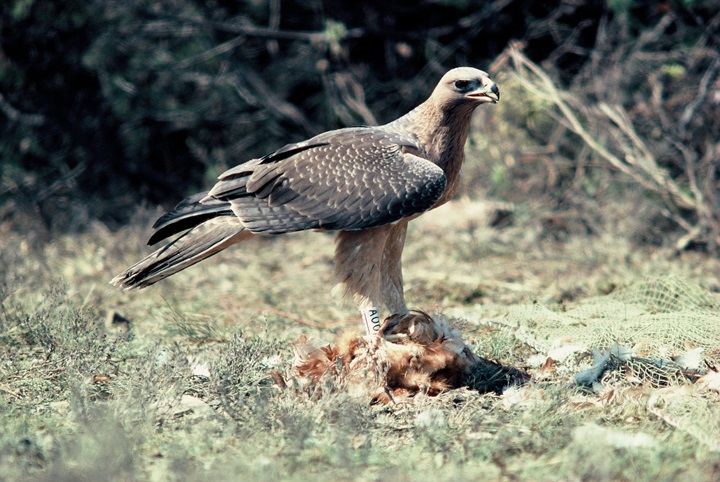
New Techniques Boost Bonelli’s Eagle Recovery
Knowing how wildlife populations change is decisive for improving the management and conservation of biodiversity. The complexity of fieldwork – logistics, capture and marking of individuals, recaptures, etc. – and the lack of long-term monitoring make it difficult to predict the future of the species under study, especially if they are threatened. Now, the methodology for determining how the demographic parameters of species vary in the natural environment has taken a step forward with an efficient and flexible protocol promoted by the Conservation Biology Group of the Faculty of Biology and the Biodiversity Research Institute (IRBio) of the University of Barcelona.
The methodology, applicable to most birds of prey and other territorial species, makes it possible to accurately identify the four main demographic processes that cause population changes in a given species: births, deaths, emigration and immigration. This advance will help to have a global view of the demographic processes and to direct conservation strategies on those processes that most affect the viability of the population (increasing births, reducing mortality, retaining specimens that migrate, etc.).
The study, published in the journal Ecological Applications , is signed by the experts Joan Real, Jaime A. Badia-Boher, Antonio Hernández-Matías, Santi Mañosa, Francisco Parés and Diego J. Arévalo-Ayala, from the UB-IRBio Conservation Biology Group, and Josep Maria Bas, from the University of Girona. The study has been supported by the Natural Parks Network of the Barcelona Provincial Council, the Natural Park Network of the Government of Catalonia, the MAVA Foundation and the companies Endesa and Bodegas Miquel Torres, among others.
The Bonelli’s eagle (Aquila fasciata) population in Catalonia – now recovering after many years declining – has been used as a model to implement the new population study methodology after nearly 50 years of scientific monitoring.
Decline and recovery of the Bonelli’s eagle in Catalonia
One of the most outstanding advances in the study of the demography of wild animal populations is the use of the Integrated Population Model (IPM), which has opened the way to study also the immigration process in the studied populations. “These IPMs help to obtain more robust and reliable estimates of population dynamics, since they are formulated so that all sources of data on a wild population (censuses, ringing or tagging data, observations during the breeding season) inform each other”, explains Professor Joan Real, head of the UB’s Department of Evolutionary Biology, Ecology and Environmental Sciences.
“Another advantage of the IPMs is their flexibility. In this study, we have used up to five different types of data, collected over the long term since 1986. This has allowed us to accurately determine demographic processes on births, deaths, emigration and immigration”, says Jaume Badia-Boher, first author of the article, which is part of his doctoral thesis at the UB.
https://web.ub.edu/en/web/actualitat/w/new-methodologies-bonelli-eagle?referer=news


